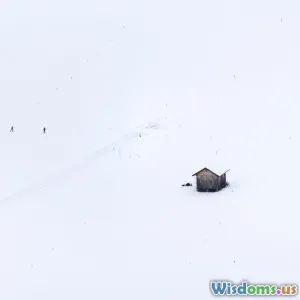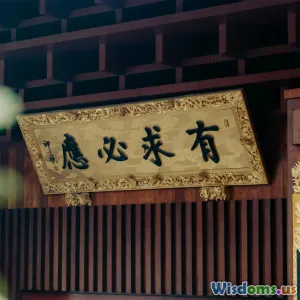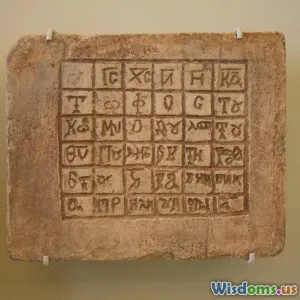
Comparing Spartan Tactics To Early Roman Military Formations
10 min read Explore the distinct tactics of Spartans and early Romans shaping ancient warfare dominance. (0 Reviews)
Comparing Spartan Tactics To Early Roman Military Formations
Introduction
In the annals of military history, few early civilizations captivate scholars and enthusiasts alike as much as the Spartans and early Romans. Renowned for their discipline, effectiveness, and iconic battlefield strategies, both cultures cultivated military tactics that influenced warfare across millennia. However, despite temporal overlap and geographic proximity, Spartan tactics and early Roman military formations reveal striking contrasts rooted deeply in cultural values, social organization, and evolving military doctrines.
This article embarks on an in-depth journey comparing these two formidable military systems. We will uncover how Sparta's unyielding phalanx compared to Rome's flexible manipular formations and how their tactical choices reflect broader societal differences. Through an examination of key battles, formation structures, training regimes, and strategic philosophies, readers will gain fresh insights into these ancient powers that forever shaped the art of war.
The Spartan Military Doctrine: Discipline and the Phalanx
The Essence of Spartan Society in War
Spartan society was famous for its militaristic orientation, where the state’s primary goal was to produce elite warriors. From childhood, Spartan males underwent the agoge, a rigorous training regimen cultivating endurance, discipline, and combat skills. By adulthood, Spartans epitomized the professional soldier archetype.
The Hoplite Phalanx: A Wall of Spears
At the center of Spartan tactics stood the hoplite phalanx—a close-packed, rectangular infantry formation composed of heavily armored soldiers wielding long spears (dory), large round shields (aspis), and short swords (xiphos). The effectiveness of this tactic relied on soldiers' cohesion, mutual protection via overlapping shields, and the forward thrust of their spears.
The phalanx was a nearly impregnable force on level terrain, advancing with discipline so precise it appeared almost as a singular entity.
- Example: Battle of Thermopylae (480 BCE) – Perhaps the most famous demonstration of Spartan hoplite tactics, where King Leonidas’s small force held a narrow mountain pass against the vastly larger Persian army using the tightly-knit phalanx.
Strengths and Limitations
The Spartan phalanx excelled in head-to-head engagements against enemy infantry. Its dense formation granted significant defensive strength and striking power. However, it lacked flexibility; maneuvering in rough terrain or irregular formations proved challenging. The tightly bound lines could be vulnerable to flanking maneuvers or attacks exploiting the phalanx's limited side and rear defense.
Spartan tactics prioritized collective discipline and cohesion rather than individual heroics, enabling strategic endurance even under severe adversity.
Early Roman Military Formations: Innovation and Adaptability
The Evolution Beyond the Phalanx
Rome initially adopted Greek-inspired hoplite tactics but quickly evolved their approach into the more flexible manipular formation during the early Republic (circa 4th century BCE).
This change was driven by Rome’s diverse terrain as well as the need to adapt to varied enemies such as the Samnites and Gauls.
The Maniple System: Modular and Dynamic
The manipular system subdivided the legion's heavy infantry into maniples, small tactical units of around 120 soldiers. These maniples were arrayed in staggered lines, allowing greater maneuverability and independent action.
- Formations: The typical three-line setup consisted of hastati (young frontline soldiers), principes (more experienced fighters), and triarii (veterans serving as the last line of defense).
This structure permitted:
- Flexibility during combat to adapt to sudden enemy moves
- Utilization of terrain advantages
- Easier command and control at the maniple level
Integration of Different Troop Types
Early Romans augmented infantry with supporting cavalry and light skirmishers called velites. These troops could harass and screen the main heavy infantry, compensating for vulnerabilities such as the limited reach of gladiolus short swords compared to Greek spears.
- Example: Battle of Sentinum (295 BCE) - Demonstrated effective coordination of manipular infantry and cavalry leading to a decisive victory over other Italian tribes.
Strengths and Limitations
The manipular formation’s flexibility was revolutionary. It allowed Rome to wage campaigns across rugged and varied terrain, responding effectively to diverse tactical threats. The Romans prioritized command hierarchy, tactical innovation, and integrating various troop roles.
However, this system demanded skilled leadership and well-trained soldiers. Early in its implementation, inexperienced troops sometimes caused unit breakdowns under pressure.
Comparative Analysis: Sparta vs Rome
Training and Military Culture
- Sparta: Military readiness entailed lifelong training and a culture that revered martial valor, framing who the Spartan citizen was.
- Rome: While early Romans valued soldier training, much of their military expansion relied on levies of citizen-soldiers who trained seasonally, coupled with veteran leadership to maintain discipline.
Formational Philosophy
- Spartan Phalanx: Unity and unbreakable solidarity through tight formation.
- Roman Manipular Legion: Modularity and tactical flexibility increased battlefield adaptability.
Battlefield Tactics
- Spartans excelled in direct confrontations on favorable terrain, leveraging overwhelming shield wall cohesion.
- Romans used staggered lines to absorb attacks, counterstrike, and outmaneuver.
Leadership and Command
Spartan commanders exercised strict control, but Spartan society’s rigid hierarchy limited tactical improvisation. Rome’s officer corps emphasized adaptability, with centurions and tribunes trained to assess and react dynamically.
Example: Phalanx vs Manipular Engagement
Though no recorded battle directly pitted Spartan phalanx against manipular legions, hypothetical reconstructions suggest the Roman flexibility could counter the Spartan wall if exploiting flanking and terrain advantages. However, the Spartans’ discipline and shock value would not be underestimated.
Lasting Legacies and Historical Impact
Spartan tactics symbolize the archetypal hoplite close-combat discipline still studied for its insights on cohesion and morale under pressure. Their example informs modern concepts of unit integrity and psychological endurance.
Roman manipular innovations prefigured the legion’s rise to unmatched dominance. Their models influenced military organization well into the imperial period, paving the way for eventual reforms into the cohort system and beyond.
The comparative study offers not just historical curiosity but practical lessons on balancing discipline and flexibility — vital concepts for military theory, leadership, and organizational behavior today.
Conclusion
Examining Spartan tactics alongside early Roman military formations illuminates two distinct paths of ancient martial excellence. Sparta’s phalanx championed unyielding unity and endurance, while Rome’s manipular legion epitomized tactical innovation and battlefield adaptability.
Understanding these differences deepens our appreciation for how social structures and environmental demands shape warfare philosophies. It also inspires an awareness that the art of war is as much about cultural identity as it is about weaponry and formations.
For modern readers intrigued by military history, the Spartan and early Roman methods offer timeless lessons in leadership, strategy, and human resilience—values relevant far beyond the dusty battlefields of antiquity.
References and Further Reading
- Hanson, Victor Davis. The Western Way of War. University of California Press, 1989.
- Goldsworthy, Adrian. The Roman Army at War 100 BC–AD 200. Oxford University Press, 1996.
- Lazenby, J.F. The Spartan Army. The Aris & Phillips Classical Texts, 1985.
- Fields, Nic. The Battle of Cannae. Osprey Publishing, 2006.
These works provide comprehensive coverage for enthusiasts eager to explore deeper nuances within Spartan and Roman military history.
Rate the Post
User Reviews
Popular Posts

















